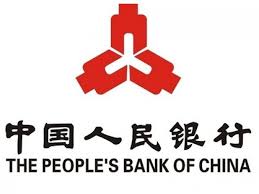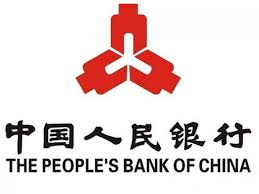
In order to boost its slowing economy, a cut on the amount of cash that all Chinese banks need to hold as reserves was announced by China's central bank which has released about 800 billion yuan or $114.91 billion in distributable funds.
Effective from January 6, the reserve requirement ratio (RRR) of banks will be cut by 50 basis points, the People's Bank of China (PBOC) said on its website. This will bring down the number for big banks to 12.5 per cent.
Since early 2018, this is the eighth time that the PBOC has cut RRR in order to allow banks to free up more cash for the purpose of lending to prop up the Chinese economy whose growth has slowed down to its weakest since almost 30 years.
However, many investors had expected that the Chinese government would make more announcements to spruce up the economy. Analysts have forecasted that the slowdown in the Chinese economy will continue in 2020 despite Beijing and Washington agreeing to de-escalate their long trade war and even in the face of some improvement in some economic data in recent times.
"The RRR cut will help boost investor confidence and support the economy, which is gradually steadying," said Wen Bin, an economist at Minsheng Bank in Beijing, who also expects another cut in China's new loan prime rate (LPR) this month.
In a speech in late December, expectations of an imminent RRR cut were raised by Chinese Premier Li Keqiang. He had said that the government was contemplating a number of measures which will help to reduce financing costs for smaller companies. Such measures included broad-based and "targeted" RRR reductions with the aim of propping up the more vulnerable parts of the economy.
Ahead of the long Lunar New Year holidays later this month, the risks of a credit crunch will also get reduced because of the freeing up more liquidity. Demand in cash generally increases during this period. There are already strains on China's financial system because of near record debt defaults and issues at some smaller banks.
Ahead of the Lunar New Year, total liquidity in the banking system is expected to remain stable, said the PBOC.
The central bank said that roughly 120 billion yuan will received by small and medium banks from the latest funds released which would be used for giving out credit for small, local businesses.
The banks' annual funding costs would get reduced by 15 billion yuan because of the lower reserve requirements, the PBOC said. That could also help to bring down the pressure on the profit margins of the banks caused by the latest reforms in the interest rates. Starting from January 1, the existing floating-rate loans will be switched to the new benchmark rate, the PBOC said last week. That was part of the central bank’s efforts to lower costs of financing.
(Source:www.timesodindia.com)
Effective from January 6, the reserve requirement ratio (RRR) of banks will be cut by 50 basis points, the People's Bank of China (PBOC) said on its website. This will bring down the number for big banks to 12.5 per cent.
Since early 2018, this is the eighth time that the PBOC has cut RRR in order to allow banks to free up more cash for the purpose of lending to prop up the Chinese economy whose growth has slowed down to its weakest since almost 30 years.
However, many investors had expected that the Chinese government would make more announcements to spruce up the economy. Analysts have forecasted that the slowdown in the Chinese economy will continue in 2020 despite Beijing and Washington agreeing to de-escalate their long trade war and even in the face of some improvement in some economic data in recent times.
"The RRR cut will help boost investor confidence and support the economy, which is gradually steadying," said Wen Bin, an economist at Minsheng Bank in Beijing, who also expects another cut in China's new loan prime rate (LPR) this month.
In a speech in late December, expectations of an imminent RRR cut were raised by Chinese Premier Li Keqiang. He had said that the government was contemplating a number of measures which will help to reduce financing costs for smaller companies. Such measures included broad-based and "targeted" RRR reductions with the aim of propping up the more vulnerable parts of the economy.
Ahead of the long Lunar New Year holidays later this month, the risks of a credit crunch will also get reduced because of the freeing up more liquidity. Demand in cash generally increases during this period. There are already strains on China's financial system because of near record debt defaults and issues at some smaller banks.
Ahead of the Lunar New Year, total liquidity in the banking system is expected to remain stable, said the PBOC.
The central bank said that roughly 120 billion yuan will received by small and medium banks from the latest funds released which would be used for giving out credit for small, local businesses.
The banks' annual funding costs would get reduced by 15 billion yuan because of the lower reserve requirements, the PBOC said. That could also help to bring down the pressure on the profit margins of the banks caused by the latest reforms in the interest rates. Starting from January 1, the existing floating-rate loans will be switched to the new benchmark rate, the PBOC said last week. That was part of the central bank’s efforts to lower costs of financing.
(Source:www.timesodindia.com)





